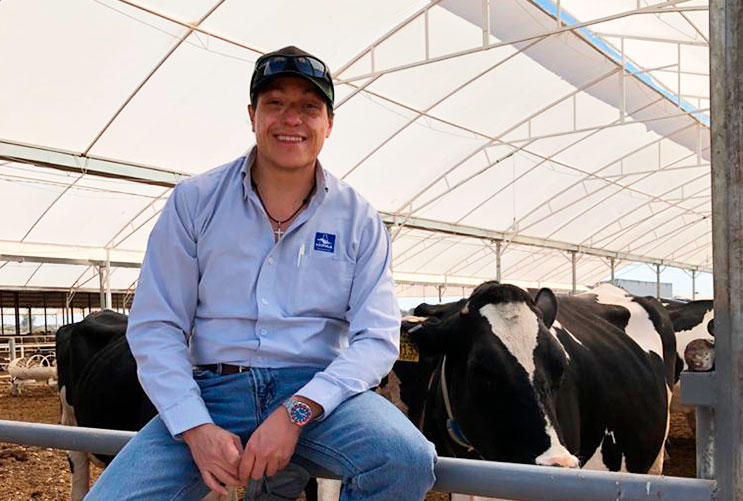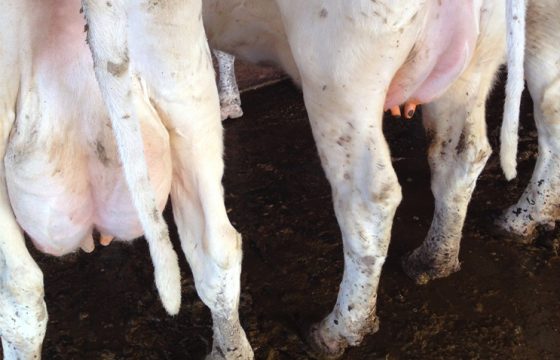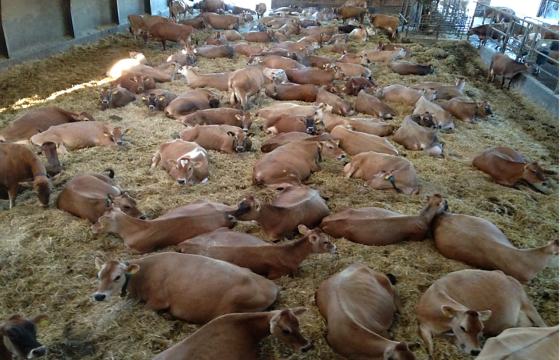Analysis of information, animal welfare and team working: The keys to good milk quality
We speak to Ariel Hernández, Technical and Marketing Manager at HIPRA Mexico, who tells us about his experience in the dairy industry and how he sees the development of the industry and the main challenges encountered today.
Interview with Ariel Hernández, MEXICO

“A good diagnosis and data analysis enable us to make a better vaccination recommendation, appropriate to the needs of each farm.”
1- Ariel, tell us a little about your experience…
During my professional career (I have been working with cattle for 20 years) I have had the opportunity to work for one of the major pasteurising companies in Mexico.
This company is a pioneer in the implementation of milk quality improvement, health and good agricultural practice programmes. I worked with the company for 12 years, my role being that of technical adviser.
I currently work for HIPRA as Ruminants Technical and Marketing Manager for Mexico. Our efforts are focussed on the implementation of prevention programmes on farms, evaluating and analysing information on the pattern of mastitis and the diagnosis of the pathogens involved. We work together with farmers, responsible medical practitioners and consultants.
This provides us with the necessary support to enable us to offer our customers value propositions, combined with monitoring of results which allows traceability of the data that are generated and empowers us to take decisions, which is essential nowadays for the milk production business.
2- The milk market is placing increasing demands on farmers. What are the main demands that we are likely to encounter globally in the milk sector? Who are the authors of these demands?
Globalisation and trends in the dairy market are focussed on the production of safe and healthy foods, together with animal welfare.
We come across these aspects every day in the media where consumers are very interested in the quality of the food that they eat.
On this point, pasteurising plants work with farmers to achieve the indicators that they require, creating products of higher quality.
Likewise, the trend towards animal welfare is gathering pace all the time. On this point, we find that farmers make enormous investments, both financial and in terms of time, to keep their animals healthy, with the best facilities and operations to achieve animal welfare.
3- In the prevention of mastitis, is it necessary to take action on different points? Which are the most important?
As it is a multifactorial disease, it is important to consider several aspects: facilities that are directly related to the environment; management of the cattle; preventive medicine programmes (such as vaccination); peripartum care; biosecurity measures, and specific points in the milking routine and equipment.
And of course, human resources are the most important as far as I am concerned.

4- You said that one of the key points for the prevention of mastitis is vaccination, but are all farms suitable for this to be carried out?
The mastitis vaccination programme has to be carried out on farms as an addition to the outcomes of the stated objectives.
Dr. Schukken mentions the “1+1 =3″, which refers to the fact that the vaccination programmes, plus the above-mentioned points, applied appropriately, allow the best outcomes to be achieved.
5- What steps should be taken on a farm that wants to implement a vaccination programme?
An appropriate diagnosis, monitoring of information and data analysis, in order to have a clear idea of the epidemiology of mastitis.
With this information, we will be able to make recommendations on the vaccination programme, which can be adjusted to the needs of each farm in order to achieve the best results.
6- How do you see the development of milk quality and farms in Mexico?
There is a clear trend towards the improvement of milk quality, as consumers are becoming ever more demanding, paying more attention to matters of animal welfare, as well as to the non-use of hormones and antibiotics.
This means that all those involved in the production chain are working hand in hand to achieve the production and marketing of a safe and healthy product with high quality standards.


